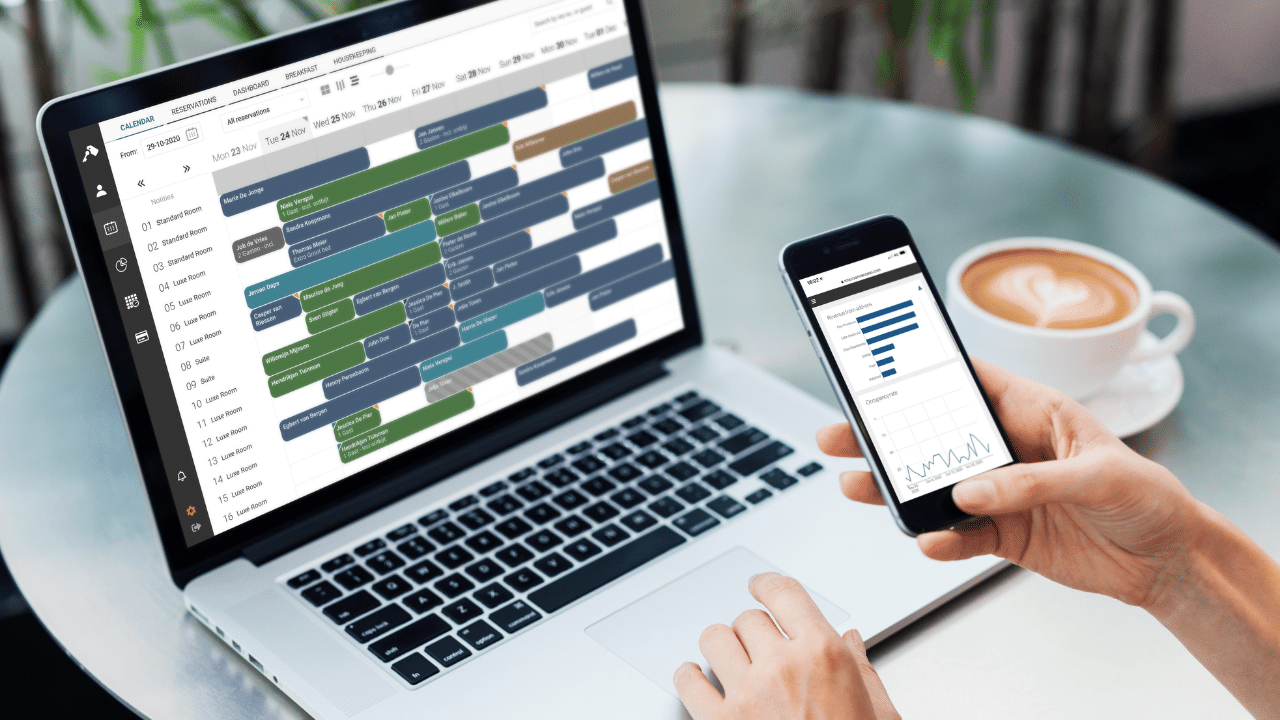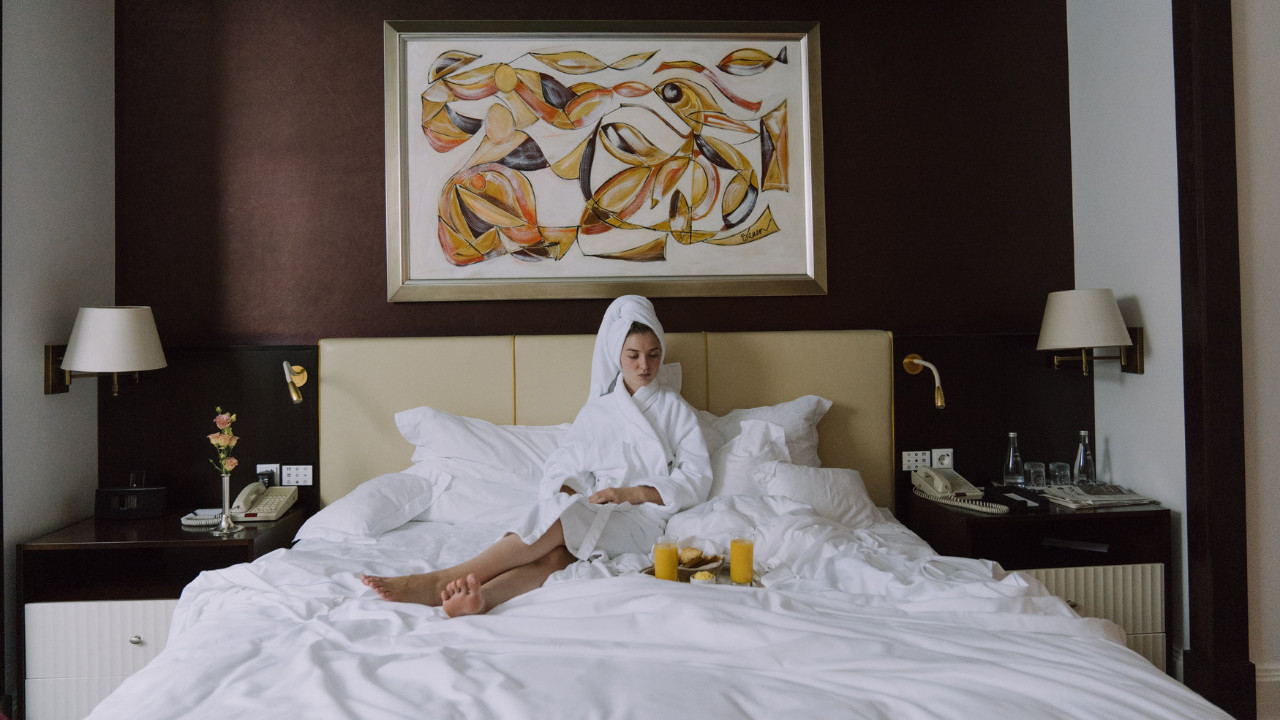CORE PRODUCT
10 Effective Pricing Strategies to Increase Your Revenue
November 8, 2023 Sini. M
Share this post

Hotels have a wealth of options for boosting revenue and occupancy. The key to success is selecting the right pricing strategies to meet their unique needs. With the right approach, hotels can drive occupancy rates and generate impressive profits.
At the heart of any successful pricing strategy is the ability to set the right room rates. By analyzing factors such as demand and customer segmentation, hotels can create pricing strategies that deliver results.
As the leading Hotel Management Software that aims to streamline operations, we’re excited to share our insights and help hotels unlock their full potential. Our article explores the most important elements of effective pricing strategies and outlines ten proven tactics hotels can use to achieve their revenue goals. After all, nothing is more important than making sure guests have a memorable and satisfying stay.
What Are Hotel Pricing Strategies?
Hotel pricing strategies refer to the price you set for each hotel room to sell as many rooms as possible and maximize your room revenue. It’s the perfect balance between charging enough to make a profit and charging a reasonable price to retain guests and keep them from going to your competitors.
Having a solid strategy is crucial in the hospitality industry when it comes to selling rooms, increasing occupancy rates, and boosting profitability. Pricing your rooms is a challenging task that requires careful consideration, as failing to do so can result in financial loss and an inability to cover operational costs. Therefore, it is important to keep in mind the key factors that can impact pricing and to implement effective strategies that can help simplify the process.
What Key Factors Should You Consider When Considering a Hotel Pricing Strategy?
When crafting effective pricing strategies in the hotel industry, a key starting point is to truly grasp your target market and align your offerings with their preferences. Equally important is gaining insights into your guests’ demographics, as well as their unique needs and expectations. By having a solid grasp of where demand for your hotel originates and what factors drive seasonal demand, you can better tailor your pricing to maximize revenue and guest satisfaction.
For instance, during the winter months, you might get more business travelers requesting single rooms, while in the summer, families tend to ask for suites. To gain a clearer understanding of your customer demographics, you can refer to your RaccoonReporting in your PMS to track the business and segments coming to your property.
10 Effective Hotel Pricing Strategies to Increase Revenue
Here are the top 10 pricing strategies for hotels that always deliver success. Let’s dive in.
1: Competitor-based
Understanding the competition is a crucial aspect of assessing how well you’re doing and keeping up with market trends. By examining your competitors, you can gain valuable insights and ideas about how to improve your business and implement effective pricing strategies. To get the most out of your analysis, focus on your direct competitors who operate in the same segment and star category as your business.
One effective pricing strategy is to base your hotel room rates on those of your competitors. Start by researching the rates they charge for each room category when increasing or decreasing their rates, and how often they offer discounts. Then, compare your rates with theirs to gain a better understanding of what customers are already paying and how much they are willing to pay. This information will help determine what price to charge for your rooms. Here’s the hotelier’s guide to competitive-based pricing and identifying your competition.
2: Length of stay pricing
You can use a pricing strategy that involves adjusting your rates according to the length of the guests’ stay. For instance, you may choose to offer a discount to guests who stay for a minimum number of days. This type of promotion can help you increase your occupancy rate during periods with low demand and build occupancy on slow nights. While devising your strategy based on length of stay, it’s also useful to know what hotel packages appeal to different types of guests — the package your guests choose will influence the price they’ll pay for their stay. Glimpse our read on effective hotel packages and how they can help you drive revenue growth.
3: Forecasting-based pricing
Forecasting is an exciting and effective strategy that hotels utilize to set prices based on their anticipated demand. It involves analyzing various factors, such as occupancy data, revenue, room rate, and average spending per room for the preceding months and comparing it to the same period in the previous year. Additionally, upcoming events and demand trends are considered to make a more accurate prediction. This strategy is crucial for hotels to ensure they remain competitive and profitable in the market.
By analyzing historical occupancy data, hotels can forecast the number of rooms that will be available in the future and adjust their hotel room prices accordingly. This allows hotels to predict the best prices based on demand and expected occupancy, which is an excellent way to attract and retain customers. However, hotels must also consider other factors, such as their location and whether their competitors have increased or decreased their prices.
Overall, forecasting is a thoughtful and positive approach that enables hotels to remain confident and optimistic about their future. By utilizing this strategy, hotels can optimize their revenue and provide exceptional service to their guests.
4: Open pricing
Open pricing is a great option for independent hotels like those that use RoomRaccoon. With open pricing, rates can be set independently for different distribution channels, meta-search engines, room types, and dates. This gives hotels the freedom to forecast more accurately and make better decisions.
5: Segment-based pricing
In the hotel industry, a common and effective pricing strategy is to tailor prices to individual customers for the same room. This approach, akin to the airline industry’s pricing model, can significantly boost a hotel’s revenue. Customer segmentation can be based on various factors, including volume, service offerings, time of purchase, and length of stay.
For instance, corporate guests who book multiple rooms at once (group bookings) may receive a discounted rate for the same room that a walk-in guest seeking a one-night stay would pay more for due to the urgency of their booking. By implementing this strategy, hotels can optimize their pricing structure and cater to the specific needs of their guests, resulting in a more enjoyable and personalized experience for all.
6: Upselling and Cross-selling
The upselling technique is a tried-and-true method for boosting revenue across various industries, and it’s particularly effective for hotels when it comes to setting prices. By presenting guests with enticing options to upgrade to better rooms, suites, or rooms with stunning sea views and by offering additional services at the time of booking, it’s possible to generate more revenue per booking. The goal is not only to capture the client’s attention but also to encourage them to indulge in additional services and amenities that can further enhance their stay.
Moreover, cross-selling is another valuable approach that can be leveraged after the booking has been made. This involves promoting extra services such as invigorating spa treatments, exciting tours, and convenient airport transfers through targeted email marketing and other online campaigns. As with upselling, cross-selling can contribute to boosting revenue per booking.
7: Incentive-based
One way to increase revenue for your hotel is to implement an incentive-based pricing strategy. This strategy involves offering discounts, promotions, and package deals to customers who book directly with your hotel via your booking engine rather than going through a third party. By doing this, you can increase the revenue per booking. To make it work, you can send repeat customers discount codes or promotions through email and online marketing campaigns.
8: Loyalty-based pricing
Offering loyalty-based pricing is a valuable and effective way to encourage people to join your loyalty program or target existing members. This pricing strategy is similar to the incentive method and can help you improve direct bookings while keeping guests returning. By providing better prices to your loyal customers, you can incentivize them to stay with you and keep coming back. This creates a win-win scenario for both the guest and the business. With our hotel reservation software, you’ll have access to real-time data of all your returning guests and their preferred room types.
9: Dynamic pricing
Looking for a winning strategy for pricing your hotel rooms? Dynamic pricing could be the answer! By relying on market demand and supply, this approach helps you set the perfect price. When demand is high, you can charge a higher rate to capitalize on Average Daily Rate (ADR). And when demand is low, you can lower prices to boost occupancy. With this smart strategy on your side, you can confidently optimize your hotel’s revenue and delight your guests.
10: Cancellation-policy pricing
A cancellation policy pricing strategy is a proven method to boost your hotel’s revenue. By offering non-refundable rates at a discounted price, you can sell rooms at a profitable rate and minimize losses. If a guest cancels their booking, you can rest assured that the revenue from the room has already been secured. This allows you to offer a lower rate to resell the room if it becomes available, resulting in increased revenue for your hotel. This strategy is beneficial during peak season and has been successfully implemented by many small hotels.
Key Takeaways
Hoteliers who don’t use automation fail to respond to demand changes on time. Keeping up with market demands is impossible when done manually. It involves tracking a multitude of events such as conferences, concerts, or other occasions that impact your demand. Many hotels miss out on important opportunities such as festivals and tradeshows to increase their rates. This is where the RoomRaccoon revenue management software comes in handy. With our help, your room rates adjust automatically across all sales platforms, ensuring that you never miss out on revenue.
Follow us
Sini. M
Sini is an accomplished Content Manager at RoomRaccoon. As an agency-hailed talent, her work brings a fresh creative flair to the world of SaaS. And she brings her very own brand of sass to the SaaS world. While not on the clock, Sini enjoys a glass of fine wine, and well, her privacy.
Related Posts
Subscribe to our newsletter for more on the latest hospitality & RoomRaccoon updates delivered straight to your inbox!








